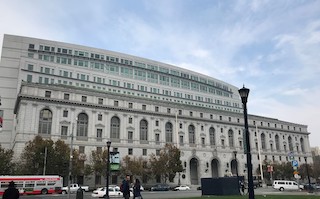San Francisco police arrested Leonardo Corona after he entered a freestanding garage located on the same property as a house. The garage at issue faced the street. The house is behind the garage and an unroofed courtyard separates the two structures. To access the house from the garage, one must exit the garage, walk across a courtyard and enter the house through a separate, locked door.
The People charged Corona with first degree burglary in the Superior Court for the City and County of San Francisco.
As the reader of this summary may know, first degree burglary applies to the burglary of “an inhabited dwelling house.” (Penal Code § 460(a)).
At the preliminary hearing, Corona argued that the first degree burglary charge was improper because the detached, uninhabited garage was not part of the house. The judge denied this motion because “the garage was in fact part of the house.”
Following the preliminary hearing, the People filed an information charging Corona with first degree residential burglary under Penal Code § 459. Corona then filed a motion to dismiss under Penal Code § 459, arguing there was insufficient evidence to support the 459 charge because the evidence showed he entered a detached, uninhabited garage. The judge hearing the 995 motion denied the motion and so, in response, Corona filed a writ of prohibition with the First Appellate District Court of Appeal.
The First District Court of Appeal agreed with Corona that unauthorized entry into an uninhabited, detached garage is not first degree burglary. Its review was considered de novo because Corona’s argument was one of statutory construction. People v. Watson (1981) 30 Cal.3d 290, 300.
 Court of Appeal First Appellate District San Francisco
Court of Appeal First Appellate District San Francisco
The First Appellate District Court of Appeal first looked at the language of section 459, noting that a “house” is considered distinct and separate from other buildings. For example, section 459 defines burglary as “Every person who entered any house, room, apartment, tenement, shop, warehouse, store, mill, barn, stable, outhouse or other building . . . with intent to commit grand or petit larceny or any felony is guilty of burglary.”
Section 460, which defines degrees of burglary, uses the term “inhabited dwelling house;” “every burglary of an inhabited dwelling house , vessel, . . . which is inhabited and designed for habitation, floating home . . . or trailer coach . . . or the inhabited portion of any other building, is burglary of the first degree.” Penal Code § 460(a). All other burglaries are second degree.
The First Appellate District noted that the People did not argue that the garage itself was inhabited. Instead, they argued that the dwelling house includes both the house and the garage, so Corona’s entry into the garage was first degree burglary of an inhabited dwelling house.
A dwelling house was defined by the California Supreme Court in 1867 in People v. Stickman (1867) 34 Cal. 242, 244-245, wherein the California Supreme Court explained, “The dwelling house . . . includes the privy, barn, stables, cow houses, [and] dairy houses, if they are parcel of the messuage, though they are not under the same roof or joining contiguous to it. And when a burglary is committed in one these outbuildings the indictment may charge the offense as done in the mansion house.” Stickman, supra, 34 Cal. at pp. 244. The Stickman court, however, observed that this view was not universally accepted by some American courts, some of which “limit[ed] the dwelling house to the building actually inhabited or to the exclusion of the outhouse, though within the same enclosure.” Id., at pp. 244-245.
In 1850, California enacted its first burglary statute and it applied to a “dwelling house” and also “any other house whatever.” Stickman, supra, 34 Cal. at p. 245.
Not long after, however, in 1872 the Legislature enacted a housebreaking statute that listed both dwelling house and outbuildings separately, indicating that the term dwelling house is distinct and does not include outbuildings.
The term “dwelling house” did not appear in any burglary statute again until 1923 when the Legislature added “inhabited dwelling house” to the first degree burglary statute, Penal Code § 460.
The Legislature never defined dwelling house further in the burglary context, but it did so in the arson statute, which is significant because, historically, both arson and burglary regard an inhabited dwelling with increased risk of harm. In 1856, the Legislature defined “dwelling house” in the arson statute to include attached outbuildings and to exclude detached outbuildings.
In short, the appellate court found that the statutory history of dwelling house does not include an uninhabited outbuilding such as a detached garage in this case. See also People v. Picaroni (1955) 131 Cal.App.2d 612, 617-618 (burglary of a detached garage was burglary in the second degree).
The citation for the First Appellate District Court ruling discussed above is People v. Leonardo Corona (1st App. Dist., 2021) 65 Cal. App. 5th 950, 280 Cal. Rptr. 3d 285.
For more information about burglary, please click on the following articles:
 Court of Appeal First Appellate District San Francisco
Court of Appeal First Appellate District San Francisco